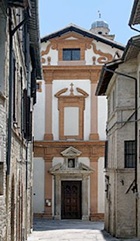
In the 13th century, the Blessed James Bianconi encouraged a noble woman, Margherita di Taddeo to found a Benedictine monastery outside Bevagna. This was constructed on the site of a church dedicated as St Pantaleon, which belonged to the Abbazia di Sassovivo.
In ca. 1350, the nuns moved to this site inside the town walls, next to the Chiesetta di San Nicolò (12th century), which also belonged to Sassovivo. This church probably stood on the site of a gate in the Roman walls, at the end of the decumanus maximus (see Walk II).
In 1475, Pope Sixtus IV authorised the nuns to demolish San Nicolò in order to extend their nunnery. In the following year, they absorbed the nuns of Santa Maria de Ponte Lapidum (see the page on the other Nunneries of Bevagna).
The popularity of the church increased after 1627, when it received relics of St Philip Neri. (St Philip died 1595 and was canonised in 1622). Bishop Lorenzo Castrucci of Spoleto granted permission for the nuns to acquire adjacent properties so that it could be rebuilt on a larger scale and re-dedicated to SS Margherita and Philip Neri. Work began in 1630 and was complete by 1640, when the high altar was restored.
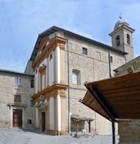
The nuns of Santa Margherita absorbed those of Santa Lucia in the late 19th century, and this merged community was absorbed by that of Santa Maria del Monte in 1904 (see the page on the other Nunneries of Bevagna). The complex passed to a community of Augustinian nuns in 1906.
Exterior
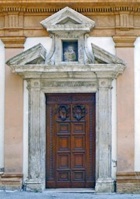
Interior
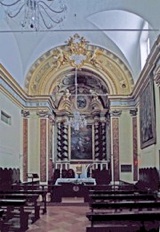
The interior is in the form of a single nave.
Fresco (1592)
This fresco, which is signed by Ascensidonio Spacca, il Fantino, is in a niche behind the high altar. It depicts
-
✴the deposition of Christ from the cross (above); and
-
✴the Madonna and Child with SS Apollonia and Catherine of Alexandria.
Altarpieces Attributed to Andrea Camassei
The church contains a number of works that are attributed to Andrea Camassei, whose sister became a nun here in 1632:
-
✴The altarpiece (ca. 1627) in the Cappella di San Filippo Neri (on the right) depicts a vision of St Philip Neri and is surrounded by six scenes from his life. It was probably painted to celebrate the arrival of relics of St Philip Neri in the church. It is a copy of a work by Guido Reni in the Chiesa Nuova (the mother church of the Oratorians) in Rome.
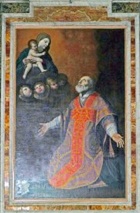
-
✴The altarpiece (ca. 1630) on the right wall depicts the Immaculate Virgin with SS Andrew, Vincent, Bonaventure and Nicholas of Tolentino. This altarpiece seems to have been taken to France in the Napoleonic period and later found its way to the church of San Nicolò, Foligno. It was returned to Santa Margherita in 1921.
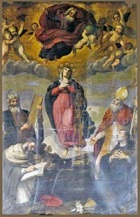
-
✴The altarpiece (ca. 1645) on the high altar depicts the martyrdom of St Margaret. It probably dates to the period after the renovation of the high altar in 1640, and may have been executed after the death of Pope Urban VIII in 1644, when the fortunes of Andrea Camassei in Rome declined.
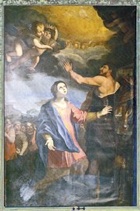
Martyrdom of Sant’ Angelico (17th century)
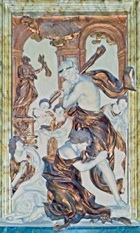
Nunnery
Frescoes of the Scala Santa (ca. 1665)
The frescoes of this staircase (see above), which depict scenes from the Passion of Christ, are attributed to Francesco Providoni.







